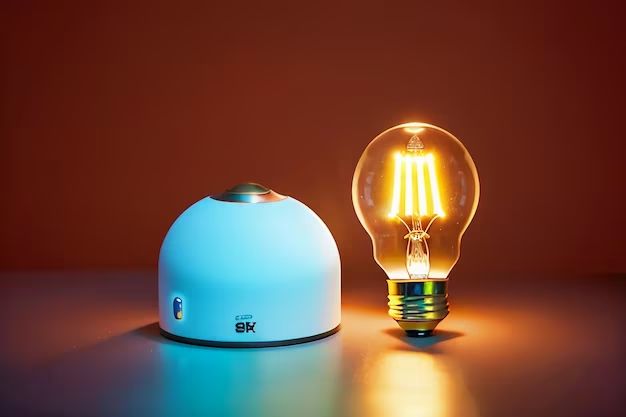Bathroom heat lamps, also known as heat lights or infrared lamps, are a common fixture in many bathrooms. Their purpose is to provide warming, therapeutic heat while bathing or getting ready. With rising energy costs, many homeowners wonder if these handy devices are actually energy hogs in disguise. Let’s take a closer look at how bathroom heat lamps work and how much electricity they truly use.
Page Contents
How Do Bathroom Heat Lamps Work?
Bathroom heat lamps operate using infrared energy. They contain special incandescent or halogen bulbs that emit infrared radiation in the form of light waves. These waves are invisible to the human eye but can be felt as heat when they reach your body. The warmth provided by infrared energy warms objects through a process called conversion. The light waves penetrate the skin and are then converted into heat as they interact with molecules beneath the skin’s surface.
Infrared lamps do not rely on heating or circulating air to provide their warming effect. The heat is directed right at your body. This allows a more concentrated delivery of warmth to specific areas like sore muscles or arthritic joints. Bathroom heat lamps typically have a focused beam spread of around 30 degrees. This directs the majority of the infrared energy produced to the area of the body closest to the lamp.
How Many Watts Do Bathroom Heat Lamps Use?
The wattage of a bathroom heat lamp can vary based on the unit. Most models fall in the 250 to 400 watt range. Here are some typical wattages:
- 250 watts – Smaller, portable infrared lamps.
- 300 watts – Average wattage for permanently installed wall-mounted or ceiling-mounted heat lamps.
- 400 watts – High-output heat lamps.
For comparison, a standard 60-watt incandescent light bulb produces about 800-850 lumens. A 300 watt heat lamp produces around 2500 lumens. So while not as bright as a regular light, heat lamps generate much more infrared energy.
How Many Amps Does a Bathroom Heat Lamp Use?
Watts measure the power consumption, while amps measure the current flow through electrical wiring. The two values are connected by this simple formula:
Amps = Watts / Volts
Most bathroom heat lamps run on 120 volts. So for example, a 300 watt fixture at 120 volts converts to:
Amps = 300 Watts / 120 Volts
Amps = 2.5
So a common 300 watt bathroom heat lamp draws about 2.5 amps.
How Much do Bathroom Heat Lamps Cost to Run?
Figuring the actual operating costs of a bathroom heat lamp requires three pieces of information:
- The wattage rating of the heat lamp
- Your local electric rate measured in dollars per kilowatt-hour (kWh)
- Estimated hours of use per day
As an example, let’s assume:
- 300 watt heat lamp
- Electricity rate of $0.12 per kWh
- 2 hours of use per day
First, we convert watts to kilowatts. 300 watts equals 0.3 kilowatts.
Then, multiply the kilowatts by the hours of use per day:
0.3 kW x 2 hours = 0.6 kWh
Finally, take the daily kilowatt-hour usage and multiply by the electric rate:
0.6 kWh x $0.12 per kWh = $0.072
So for a 300 watt heat lamp used 2 hours per day at an electric rate of $0.12/kWh, the operating cost would be about $0.07 per day.
Estimating Yearly Costs
Based on the above example, we can expand our calculation to estimate yearly costs:
Daily cost: $0.07
Days used per year: 365 days
Yearly cost = Daily cost x Days used
Yearly cost = $0.07 x 365 days
Yearly cost = $25.55
So for daily use of about 2 hours, a 300 watt bathroom heat lamp would cost around $25 to run annually. Let’s look at a table showing the estimated yearly cost for different levels of use:
| Hours Used Per Day | Yearly kWh Usage | Yearly Cost @ $0.12/kWh |
|---|---|---|
| 1 hour | 109.5 kWh | $13.14 |
| 2 hours | 219 kWh | $26.28 |
| 4 hours | 438 kWh | $52.56 |
The table illustrates how the operating costs scale linearly with usage. Running a 300W heater for 1 hour per day would cost around $13 per year. Increasing to 4 hours per day would quadruple the yearly cost to around $53.
Cost Saving Tips
Here are some tips to help minimize the cost of running your bathroom heat lamp:
Use a timer
Timers allow the heat lamp to turn off automatically after a set amount of time. This prevents accidentally leaving it on longer than needed.
Take shorter showers
Limit shower times to reduce heat lamp usage. Long hot showers can ramp up energy costs.
Lower the wattage
When buying a new unit, consider a lower wattage model. This reduces the power draw and subsequent cost to run the heat lamp.
Use selectively
Only use the heat lamp when really needed as opposed to daily use. This can greatly reduce the hours of use.
Install a occupancy sensor
Occupancy sensors automatically turn the heat lamp on and off based on detecting motion in the bathroom. This prevents the lamp from running when nobody is present.
Conclusion
Bathroom heat lamps can use significant electricity if run for extended periods of time. Daily usage of just 1-2 hours can add up to $25 or more in annual costs for a 300 watt model. The operating cost goes up proportionally the more the heat lamp is used. By carefully limiting usage, adding controls like timers and sensors, and selecting an appropriate wattage unit, homeowners can enjoy the benefits of heat lamps without excessive energy bills.
